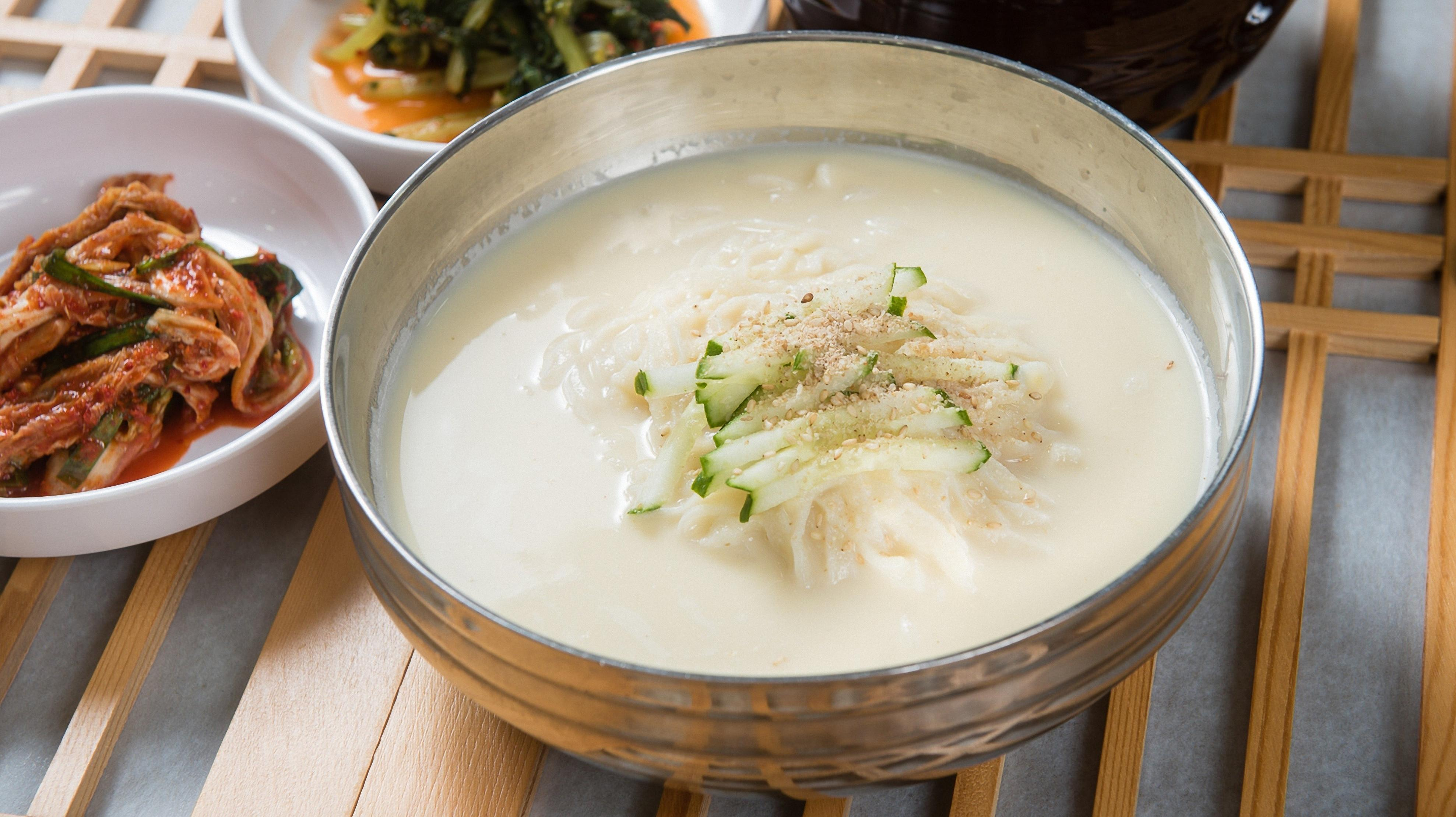Find Summer Comfort In This Simple Korean Noodle Dish
All you need is a rich soy milk, some noodles, and you're all set.
Summertime in Korea can be hot and muggy, which means Korean food is designed to cool people off during the hot season. I previously gave you an intro to the refreshing noodle dish naengmyeon, and one thoughtful commenter reminded me not to forget about another quintessential summertime noodle dish, known as kong-guksu. (Thanks, KDian!)
What is kong-guksu?
This one is about as simple as Korean cooking gets. That's because kong-guksu, which literally translates into "bean noodles," is basically only two ingredients: noodles and homemade soy milk. The dish is served cold, and is garnished with julienned cucumbers and a sprinkling of toasted sesame seeds. Sometimes you'll see a hardboiled egg on top, maybe some tomatoes, but when my mom makes it, it's just cucumbers and sesame seeds.
The soy milk, typically made from scratch, isn't the thin kind you're probably picturing from the supermarket in the dairy alternatives section. Rather, it's cooked and pureed yellow soybeans that are pulsed with water in a blender or food processor. The resulting mash is then pushed through a sieve, and since it uses plenty of soybeans, it retains a thick creaminess that's nourishing, yet light at the same time. You'll notice the simple nutty flavor of unadorned soybeans clinging to your noodles, which are wheat-based. It's a dish that focuses on comfort.
How to serve kong-guksu
Banchan, aka the little side dishes you prepare for a Korean meal, really sing here. My favorite to eat with kong-guksu is simply any kind of kimchi, because the cold fermented vegetables punch through the humble flavor of the noodles and soy milk.
You can absolutely pick up kits at the grocery store in the refrigerated section, which come with noodles and a soy milk base. (Garnishes aren't included, though.) While the kits are perfectly functional and will fit the bill for when you don't feel like doing much cooking, the homemade kind is miles better, and really not much effort other than blitzing up some cooked soybeans and cooking some noodles.
If you'd like to try some for yourself, Korean cooking blog Korean Bapsang has a really easy recipe. (Though tree nuts are included in the ingredients list, I'll let you know that they're wholly optional, in case you've got allergies.) Since we've got plenty of summer left, try giving kong-guksu a shot, and bask in the joy of its simplicity.
